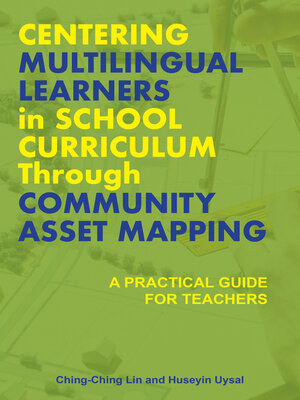Centering Multilingual Learners in School Curriculum through Community Asset Mapping
ebook ∣ A Practical Guide for Teachers · Demystifying Social Justice Education: Moving from Trendy to Transformative Equity and Justice Practices in Schools
By Huseyin Uysal

Sign up to save your library
With an OverDrive account, you can save your favorite libraries for at-a-glance information about availability. Find out more about OverDrive accounts.
Find this title in Libby, the library reading app by OverDrive.



Search for a digital library with this title
Title found at these libraries:
| Library Name | Distance |
|---|---|
| Loading... |
Centering Multilingual Learners in School Curriculum through Community Asset Mapping is written for educators working with culturally and linguistically diverse student populations, particularly those from historically marginalized backgrounds. It presents and explores Community Asset Mapping (CAM) as a transformative pedagogical approach that values students' lived experiences, cultural wealth, and linguistic repertoires as essential components of learning. It speaks to teachers who seek to integrate students' strengths and assets into the curriculum while challenging hierarchical structures of knowledge and language within the education system.
Written by two multilingual language education professionals who draw upon their own educational journeys and rich, multifaceted experience working with multilingual learners, this book is also grounded in a post-qualitative research approach. It weaves together culturally responsive teaching, translanguaging, and community asset mapping as a co-learning practice, alongside a diverse range of critical theories and pedagogical approaches. This resource extends beyond academic scholarship; it engages with community-based initiatives, social entrepreneurship, and lived experiences to offer both a holistic perspective and a practical, action-oriented approach. Through this lens, the authors aim to equip educators with the tools to transform classrooms into more equitable and justice-driven learning spaces. Throughout the book, numerous examples and practical resources are offered to bring these ideas to life, demonstrating how CAM can be implemented in the classroom as a powerful and enriching teaching strategy.
More than just a resource, this book is a call to action—an invitation for educators to embark on a collaborative journey. It embraces vulnerability, emphasizes co-learning, and celebrates the communities that shape the work of language education professionals. Through this shared effort, the authors invite educators to join them in critically reimagining education and advocating for more equitable, asset-based practices that truly honor the voices and experiences of their students.
Perfect for courses such as: Multicultural and multilingual Education; Sociolinguistics; Methods and Materials in TESOL Education; Curriculum Design in Education or TESOL; Language, Culture and Society; Urban Education; Family Engagement in Education







